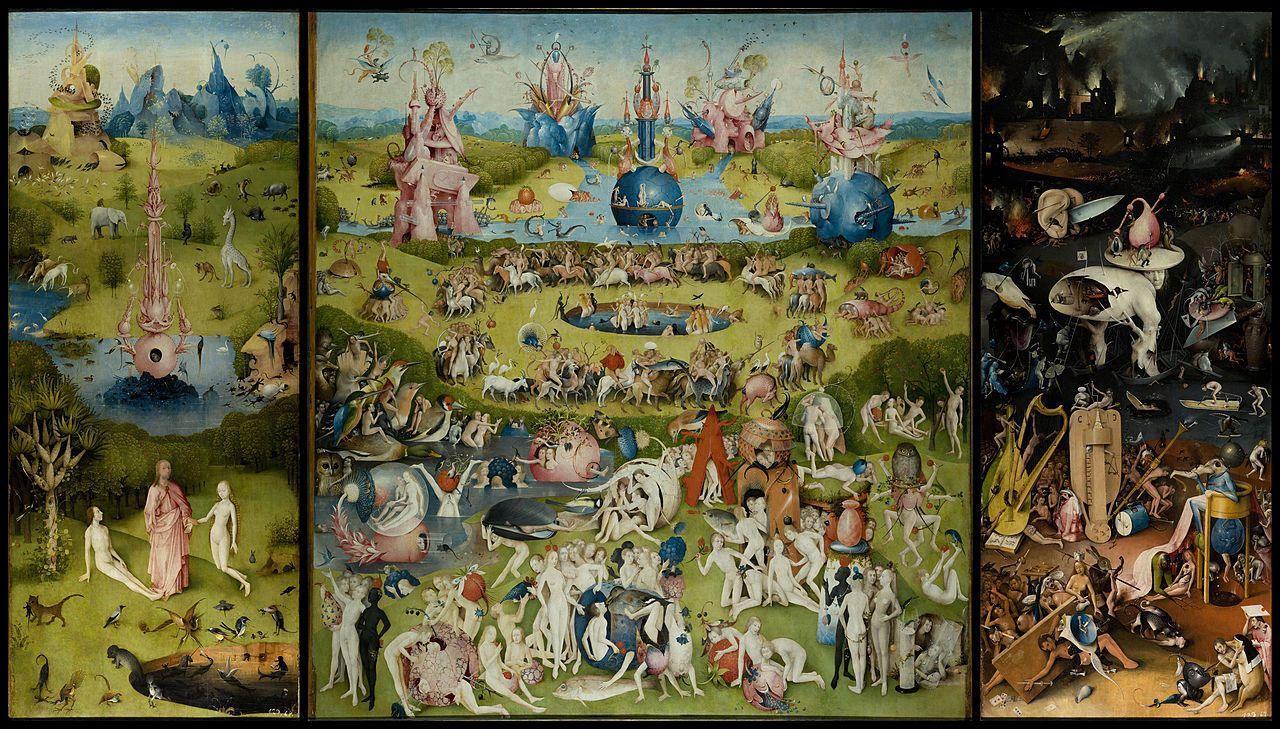Description
The dominant theme of the painting is fleshy pleasure. In one area, a group of nude figures intertwine nibbling on a gigantic, succulent strawberry.
Hieronymus Bosch's panel contemplates the dangers of worldly temptation and contains many interesting references. One of the strangest was discovered by a college student in 2014.
In the lower left corner of the artwork, a musical score can be seen tattooed on someone's backside. The musical notes were translated into modern notation and now the tonality can be heard.
Writing about Hieronymus Bosch's triptych is trying to describe the indescribable and deciphering the indecipherable: an exercise in madness. However, there are some points that can be established with certainty.
The painting was first described in 1517 by the Italian chronicler Antonio de Beatis, who saw it in the palace of the Counts of Nassau in Brussels. Therefore, it can be considered a commissioned work. The fact that the counts were powerful political players in the Burgundian Netherlands made the palace a setting for important diplomatic receptions and the work must have caused something of a sensation among the viewing public, as it was copied, both in painting and in tapestries, after the artist's death in 1516.
Therefore, we can assume that Bosch's strange lexicon of human congress must have had some appeal, or some meaning, for a contemporary audience. In a period marked by religious decline in Europe and, in the Netherlands, the first blush of capitalism after the abolition of the guilds, the work has often been interpreted as a warning against carnal and worldly indulgence, but it seems purposeful. rather prosaic to assign to a highly symbolic and expressively detailed tour-de-force. And indeed, there is very little agreement on the precise meaning of the work.
The painting is actually a triptych set of creation and damnation, beginning with Adam and Eve and ending with a highly imaginative sort of hell through the looking glass. No one really knows why Bosch envisioned the world in this particular way.
There are many conjectures about this original piece as well as the artist and his motivation to complete a work with a powerful message. Was Hieronymus Bosch an alchemist? Given his references to alchemy, it is estimated that he was at least familiar with the subject. If he were carrying out chemical experiments, perhaps he could explain, at least in part, the hallucinatory quality of the painting.
It can also be argued that fruit and excessive fruit consumption could be a metaphor for sexual acts. Instead of the artist showing direct depictions of sex, Bosch painted the insatiable appetites for nudes and fruit instead of "sinful" acts.
The Garden of Earthly Delights is ranked no. 81 on the list of famous paintings




